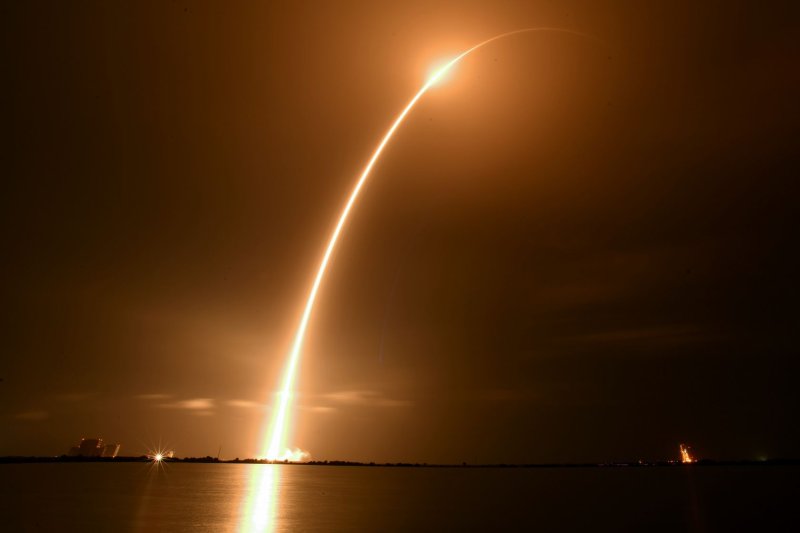A SpaceX Falcon 9 rocket launches a 7.5-satellite for SiriusXM at 12:26 a.m. Sunday from Complex 40 at the Cape Canaveral Space Force Station in Florida.Photo by Joe Marino/UPI |
License Photo
June 6 (UPI) -- Elon Musk's SpaceX launched a communications satellite for SiriusXM early Sunday from Florida in the first such mission since one of the broadcast company's spacecraft failed after launch in December.
The satellite, known as SXM-8, was lifted aboard a Falcon 9 rocket at 12:26 a.m. from Space Launch Complex 40 at Cape Canaveral Space Force Station. The launch, which occurred at the start of a nearly 2-hour window, was the company's 18th launch of the year.
It carried the SXM-8 digital radio satellite into orbit for Sirius XM's 34 million subscribers, according to the company.
A malfunction of the company's previous satellite, SXM-7, led to the total loss of the spacecraft after SpaceX successfully launched it. SiriusXM reported the malfunction in January, but said the loss,
was was insured for $225 million, wouldn't affect its service because it has multiple satellites.
But this time the launch was successful. Approximately 9 minutes after liftoff, the booster's first stage returned to Earth, landing on one of SpaceX's two drone ships, called "Just Read The Instructions" stationed out in the Atlantic Ocean.
"We have touchdown of Falcon 9," said SpaceX's Jessie Anderson during the launch webcast. "Today marks the 87th overall successful recovery of an orbital class rocket."
On Thursday, a SpaceX launched from the Florida site. A different Falcon 9 blasted off from Pad 39A at the nearby Kennedy Space Center. Its payload was a gumdrop-shaped cargo capsule bound for the International Space Station that arrived at the orbiting laboratory on Saturday morning with 7,300 pounds of science gear and supplies.
The rocket glowed orange as the rocket climbed through the cloud layers.
Weather risks at that time included showers and cumulus clouds, according to a forecast from the Space Force. The second launch window was Monday
Sirius XM service comes installed in new vehicles from every major automaker in the United States and is available in nearly half of the preowned vehicles for sale in the country, according to the company.
Two more SpaceX flights are scheduled for this month, including upgraded GPS III satellite for the U.S. Space Force. This would be the first military payload to fly on a reused rocket.
UPI's Paul Brinkmann contributed to this report.















